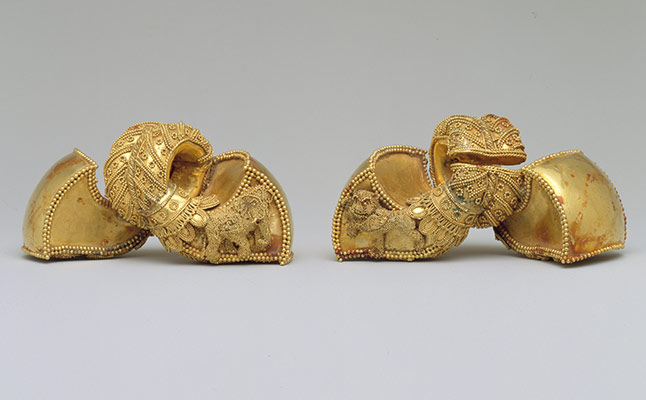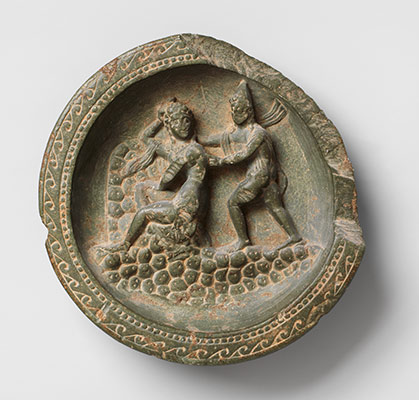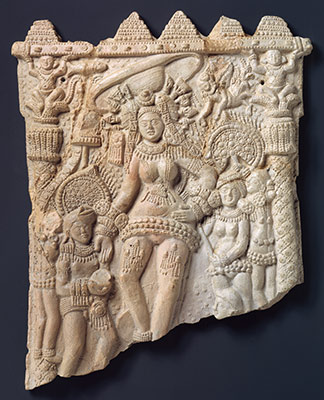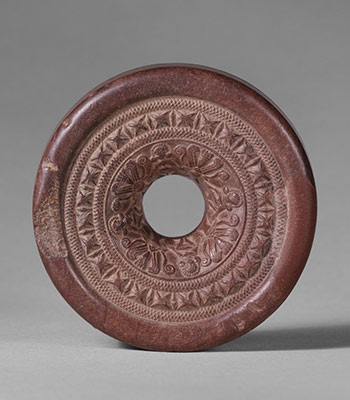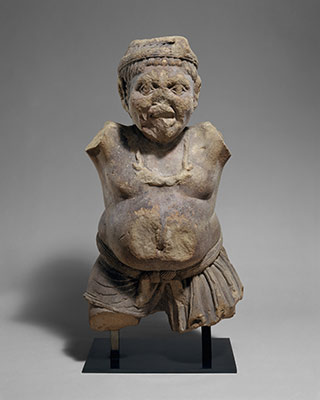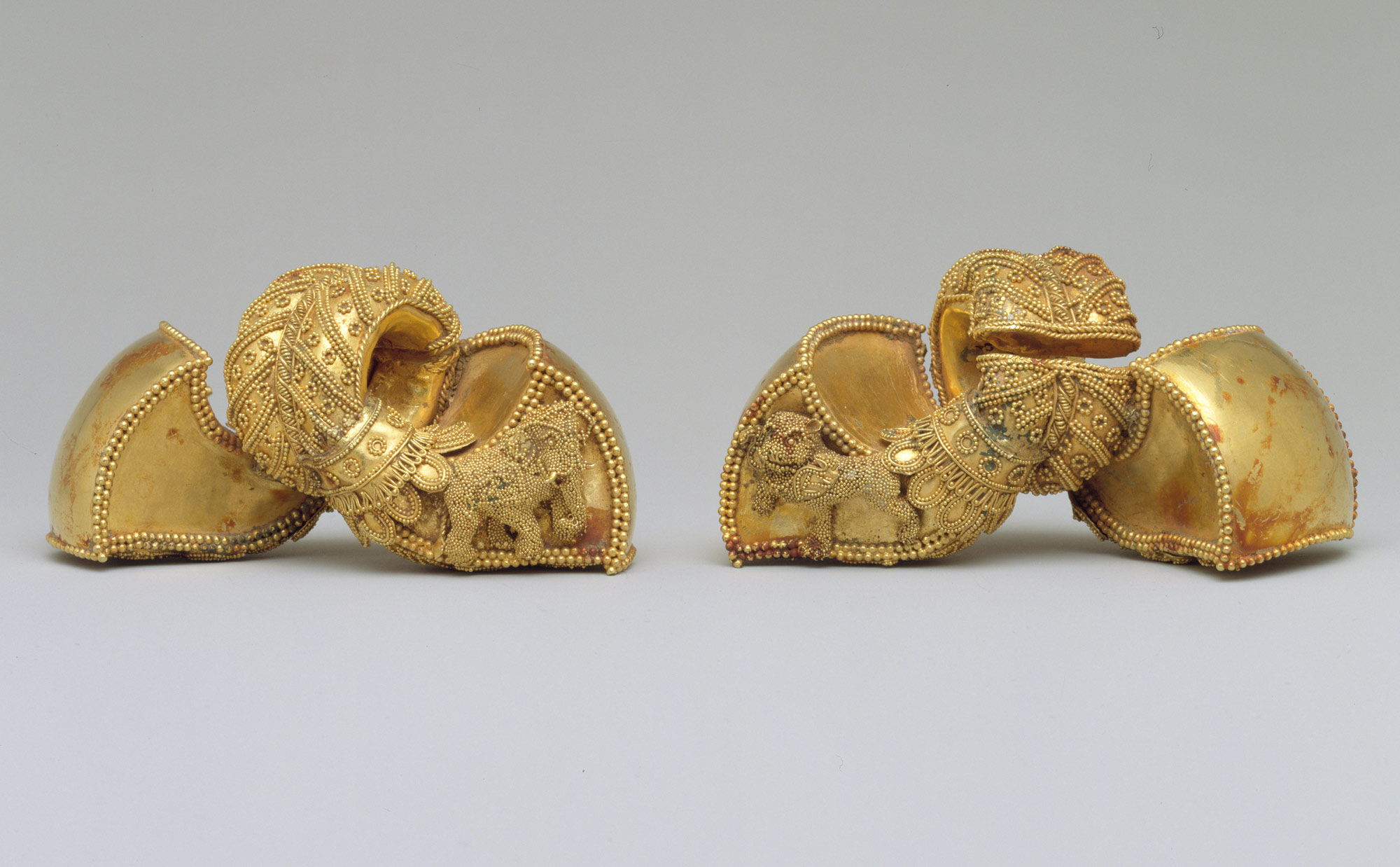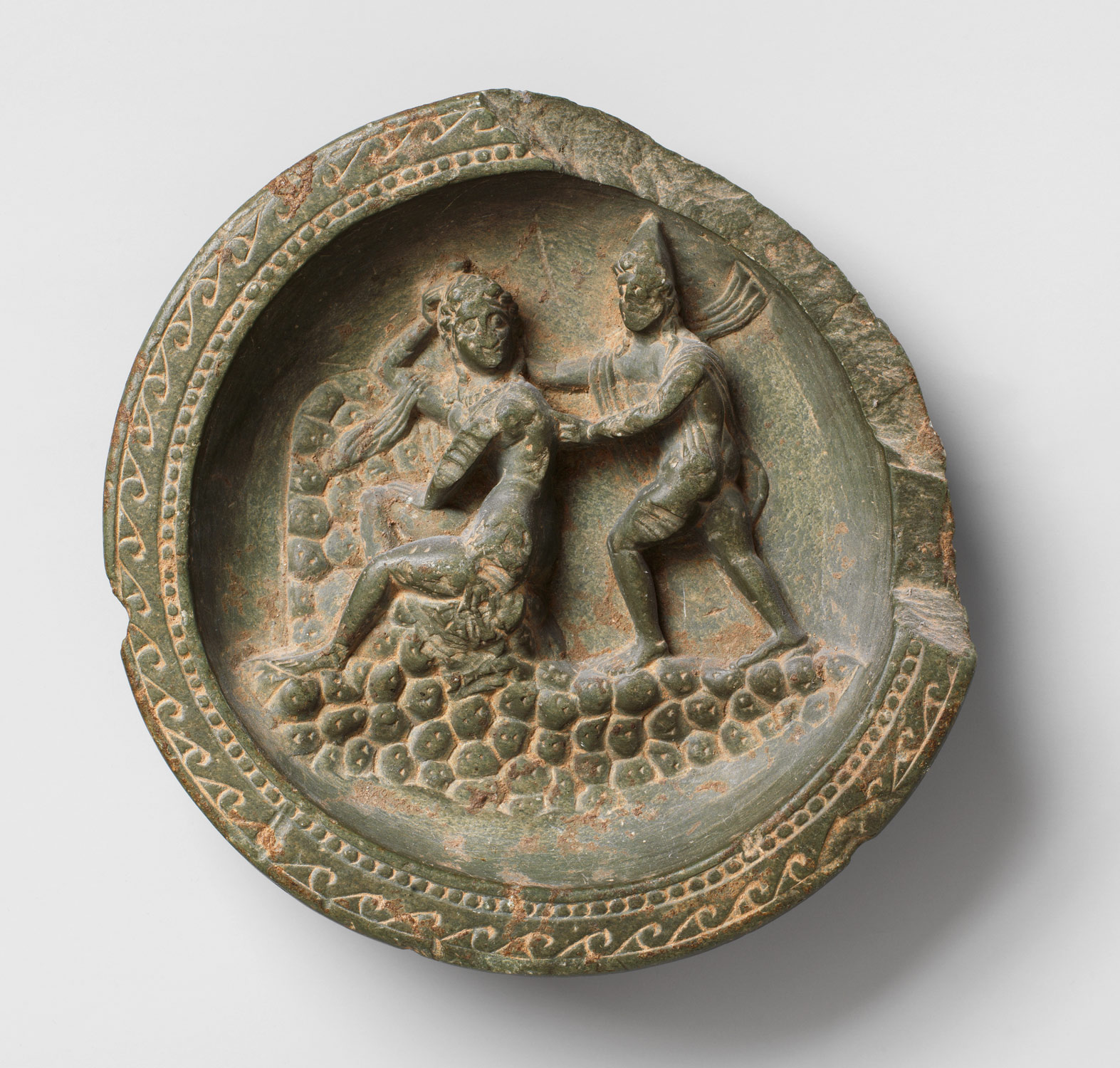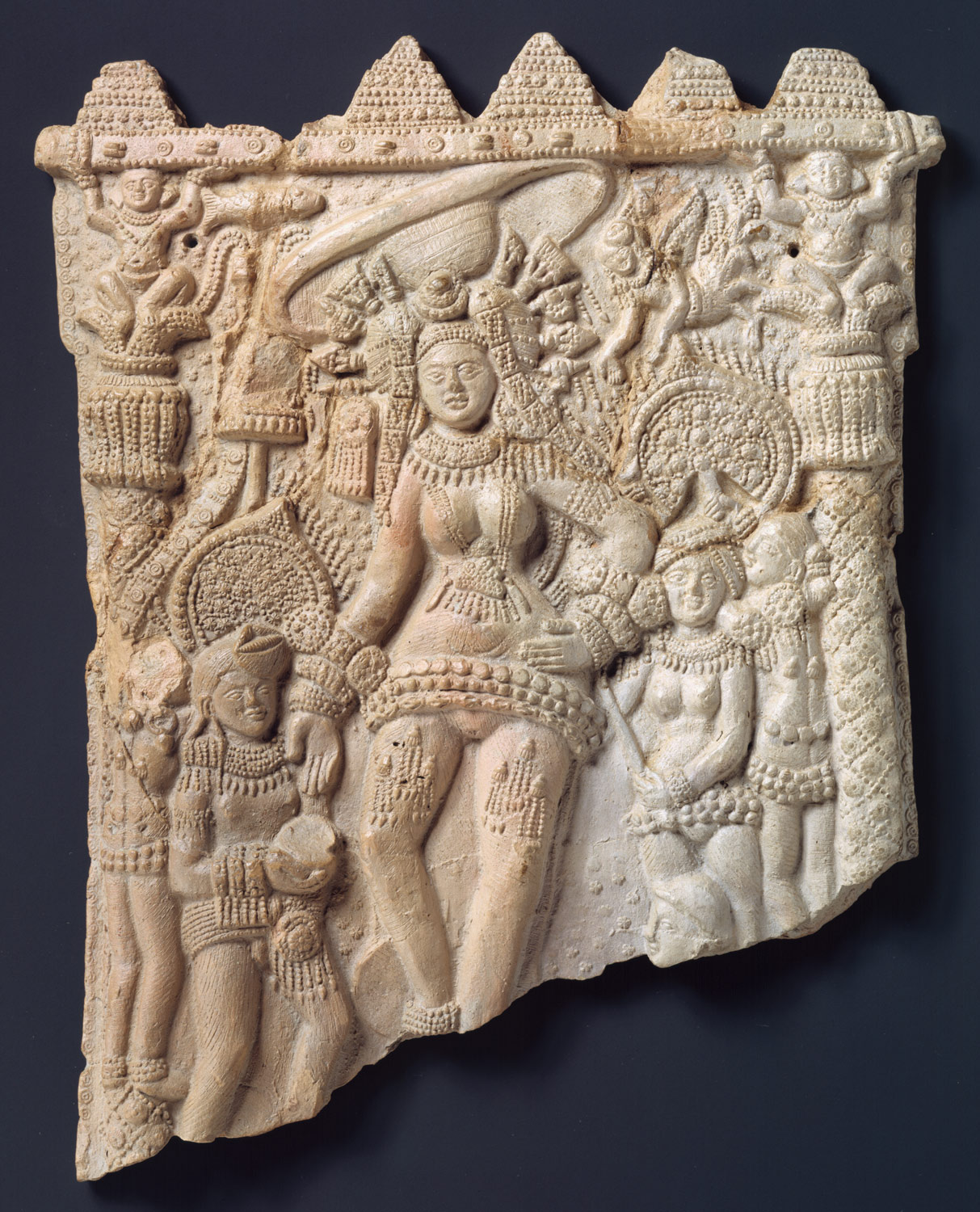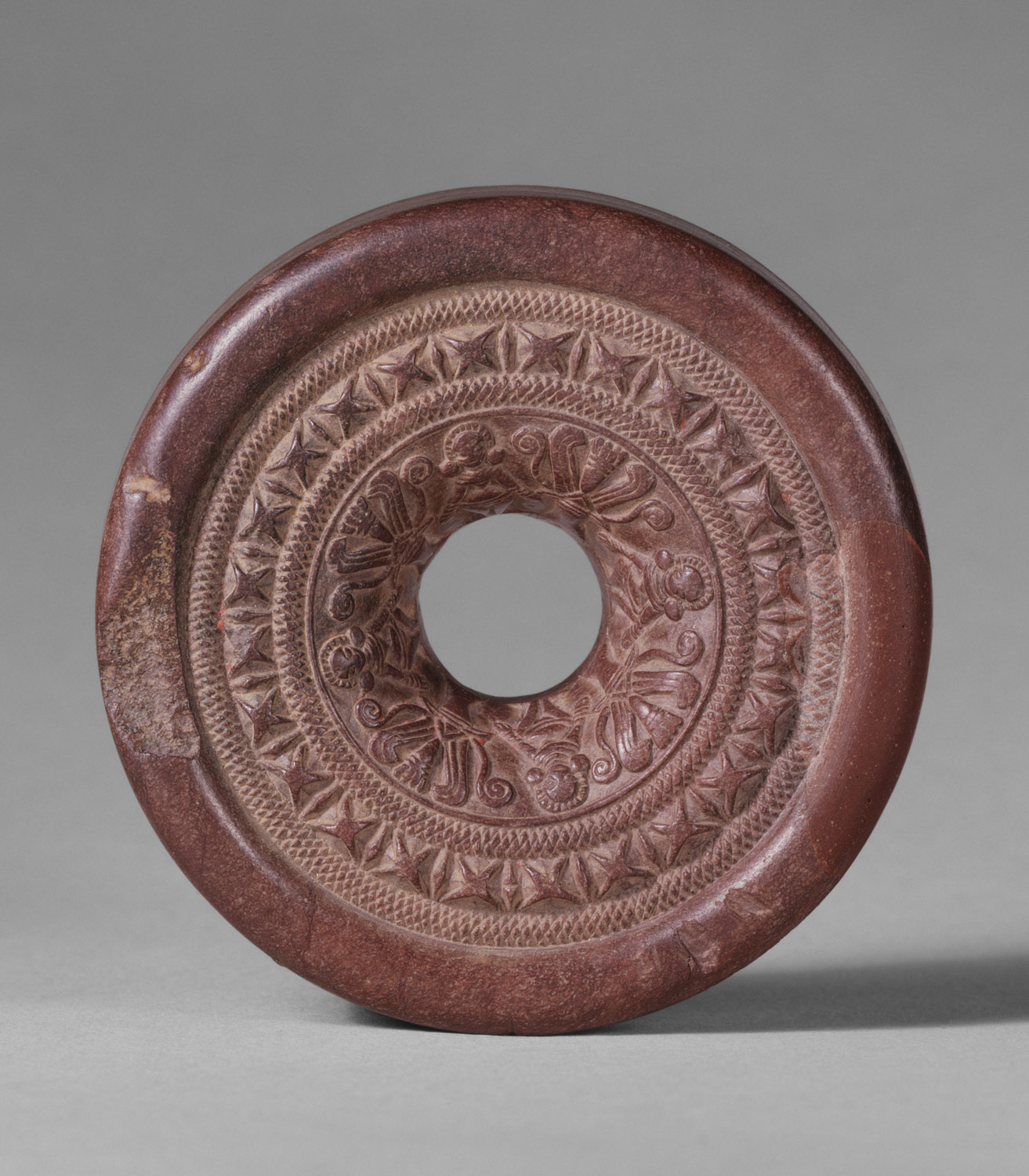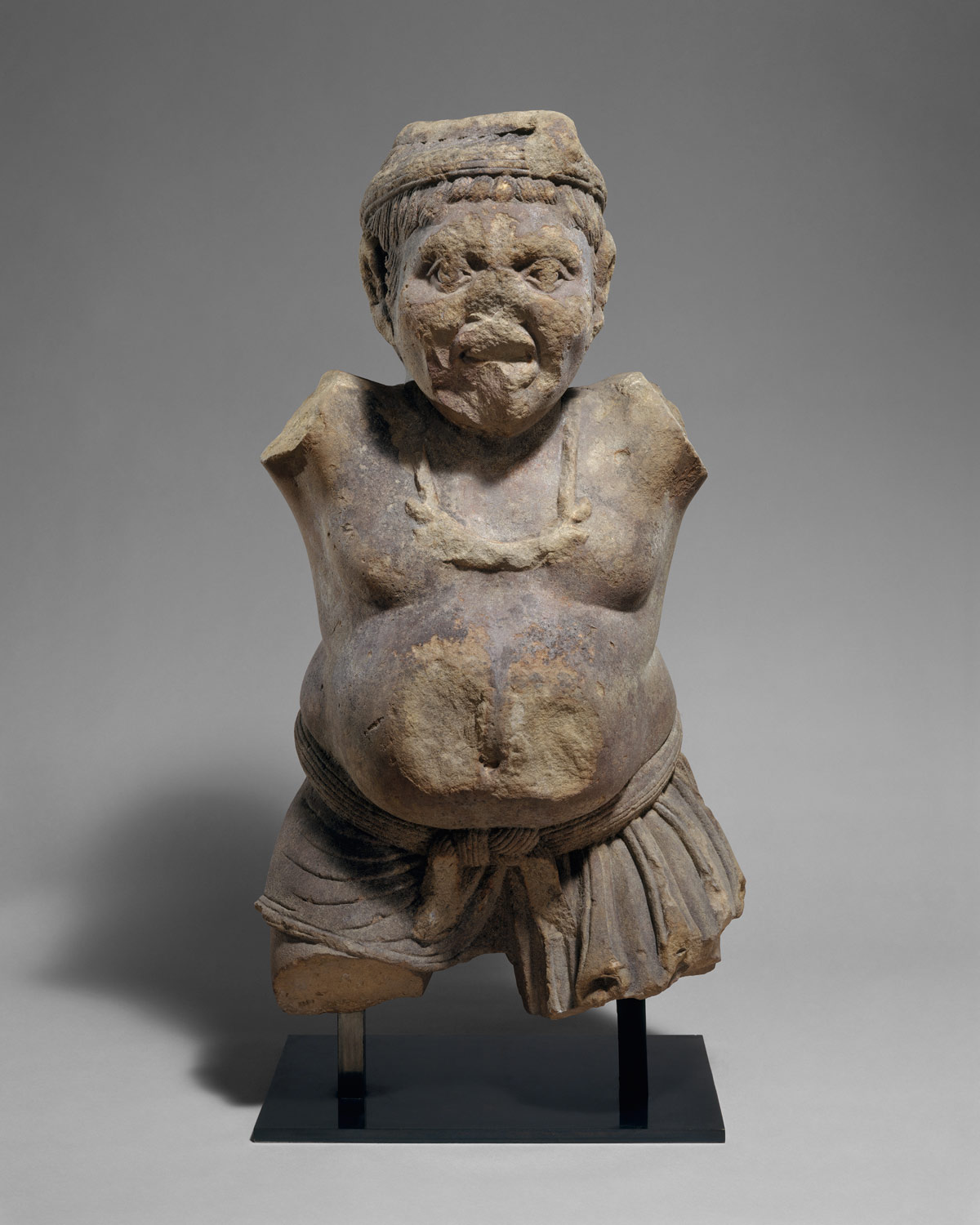The first millennium B.C. is a dynamic period in the development of South Asian culture and artistic traditions. In North India, imperial power is centered in the Magadha region, later the core of the Mauryan empire, which in the third century B.C. controls all but the southern tip of India. Two heterodox religions, Buddhism and Jainism, arise in critical response to the Sanskrit-based Brahmanic religious tradition. Great forms of art—rock-cut architecture and stupas—are constructed and dedicated to the Buddha, and often illustrate scenes from his life.
South Asia, 1000 B.C.–1 A.D.
Timeline
1000 B.C.
750 B.C.
NORTH
SOUTH
750 B.C.
500 B.C.
NORTH
SOUTH
500 B.C.
250 B.C.
NORTH
SOUTH
250 B.C.
1 A.D.
NORTH
SOUTH
Overview
Key Events
-
ca. 1000 B.C.
South Indian megalithic burial sites from the first millennium B.C. feature large terracotta sarcophagi as well as Black and Red Ware and Plain Red Ware ceramics. The use of iron commences in the south, as shown by the inclusion of iron weapons in grave sites.
-
ca. 800 B.C. onward
A series of Sanskrit texts, the Brahmanas and Upanishads, are composed as part of the Vedic corpus, centered around the collections of hymns developed in the middle of the second millennium. These texts provide the ritual and philosophical foundation of the Indian religion known since the nineteenth century as Hinduism.
-
8th century B.C.
Large, fortified urban centers, known as the 16 mahajanapadas (“great states”), arise in North India. Internecine wars lead to the eventual dominance of the Magadha region in the northeast under two key leaders: Bimbisara (540–493 B.C.) and Ajatashatru (493–461 B.C.). Their territories form the core of the later Mauryan empire.
-
ca. 700–300 B.C.
A ceramic style known as Northern Black Polished Ware develops alongside the formation of regional states and the consolidation of imperial power in Magadha.
-
ca. 6th century B.C. onward
The development of philosophical sutra and sociolegal shastra literature commences in this period, alongside the development of Buddhist and Jain philosophical texts. Key works include Panini’s grammatical sutras (sixth to fifth century B.C.), the Arthashastra attributed to Kautilya, minister of the first Mauryan emperor Chandragupta I (fourth century B.C.), and the Manusmriti by the legendary legal scholar Manu (second to third century A.D.). Later literature, such as the Natyashastras, Vastushastras, and Shilpashastras, describes and prescribes the models for dance, the visual arts, and architecture.
-
ca. mid-6th–4th century B.C.
Alexander the Great (356–323 B.C.) invades northwestern India in 327–326 B.C. In 305 B.C., the Hindu Kush mountains are fixed as the boundary between the Mauryan empire, centered on the Magadha region in the northeast, and that of the Seleucids, comprised of the eastern provinces of Alexander’s empire after his death.
-
ca. 5th century B.C.
Two heterodox religions—Buddhism, founded by Siddhartha Gautama, and Jainism, founded by Mahavira—arise as a critical response to Vedic and Brahmanic religious traditions.
-
ca. 3rd century B.C.
Ashoka (r. ca. 273–232 B.C.), third ruler of the Mauryan empire, controls all but the southern tip of the subcontinent. In 260 B.C., Ashoka converts to Buddhism after defeating the Kalinga region in present-day Odisha in a particularly bloody conflict, and promotes the Buddhist dharma (teaching) throughout the subcontinent and beyond. The emperor builds monolithic pillars with carved epigraphs crowned by capitals, rock-cut architecture, and stupas. A writing system is used to carve texts on monumental pillars and boulders. Ashoka is credited with constructing the initial stupa at Sanchi, which is later greatly expanded and elaborated under Shunga patronage.
-
ca. 3rd century B.C.
The great oral Sanskrit epic poems, the Mahabharata and Ramayana, are composed orally. In succeeding centuries, the Ramayana becomes a major inspiration for art and vernacular literature in South and Southeast Asia. These texts are transmitted orally until compiled and written centuries later.
-
Rock-cut monasteries and chaityas (chapels) are hewn from mountainsides, starting from the middle of the third century B.C. This practice is popular in the construction of Buddhist sacred sites in following centuries and is taken up in the development of Hindu temples in the fifth century A.D.
-
2nd century B.C.
Greco-Bactrian forces cross North India under Menander (r. 160–130 B.C.). Greek-derived kingdoms continue until the Shaka (Scythian) invasion around 80 B.C. The Shakas rule in North India until about 400 A.D. (in present-day Gujarat and Sindh), but are supplanted in many places to the west by the Indo-Parthians and the Kushans.
-
ca. 180 B.C.
The last Mauryan emperor is killed by his commander-in-chief, initiating the Shunga dynasty in the northeast. The Satavahana dynasty arises out of Mauryan disintegration and expands to include the Deccan and Central India.
-
ca. 100 B.C.
Narrative sculptures describing the life of the Buddha, glorifying the sacred places and relics associated with him, and relating the stories of his past lives (called jataka tales) decorate railings encircling stupas—reliquary mounds that hold the remains of the Buddha and other sacred persons—such as those at Sanchi, Bharhut, and, later, Amaravati. Anthropomorphic representations of the Buddha are rare in narrative art until the first century A.D.
-
ca. 1st century B.C.–1st century A.D.
Mahayana (“Great Vehicle”) Buddhism, which emphasizes the salvation of sentient beings through the assistance of bodhisattvas, emerges and later becomes the dominant form of Buddhism in most of Asia.
-
The Buddha image develops in both the Gandharan region and the present-day city of Mathura in the northeast. Gandharan Buddhist art exhibits a strong Mediterranean influence, while Mathura Buddhist art maintains an Indic aesthetic style. Buddhist art also flourishes in Andhra, South India. The Great Stupa at Amaravati exemplifies the Andhra style during the Satavahana period.
Citation
Related
Map

Primary Chronology
Secondary Chronology
See also
Keywords
- Afghanistan
- Andhra Pradesh
- Anuradhapura Period
- Asia
- Bangladesh
- Bhutan
- Delhi
- Gandhara
- Gujarat
- Ikshvaku Period
- India
- Kushan Period
- Mumbai (Bombay)
- Nepal
- Pakistan
- Rajasthan
- Shunga Period
- South Asia
- Southeast Asia
- Sri Lanka
- Tamil Nadu
- Tibet
- Uttar Pradesh
- 10th Century B.C.
- 9th Century B.C.
- 8th Century B.C.
- 7th Century B.C.
- 6th Century B.C.
- 5th Century B.C.
- 4th Century B.C.
- 3rd Century B.C.
- 2nd Century B.C.
- 1st Century B.C.
